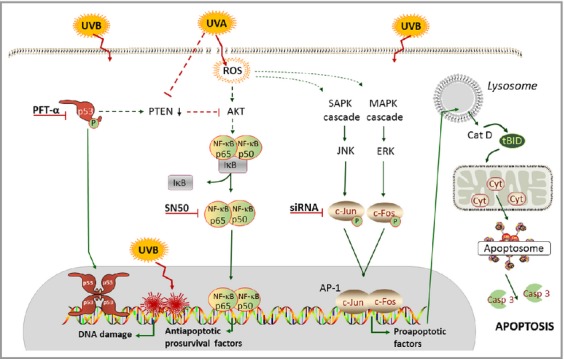Figure 6.

Suggested intracellular pathways for ultraviolet (UV)A- and UVB-induced signalling in human melanocytes. UVA induces plasma membrane damage and reactive oxygen species (ROS)-induced oxidative modification of DNA, whereas UVB causes direct damage to the DNA without any ROS or plasma membrane alterations. Even though the damage to DNA and induction of oxidative stress differ after irradiation with UVA and UVB in melanocytes, the apoptosis signalling converges into a common mechanism. The transcription factor nuclear factor (NF)-κB was identified as being important for the prosurvival reactions of the cell, and activator protein (AP)-1 as an important proapoptotic factor during both UVA- and UVB-induced apoptosis in human melanocytes. Casp, caspase; Cat, cathepsin; Cyt, cytochrome; ERK, extracellular signal-regulated kinase; IκB, inhibitor of κB; MAPK, mitogen-activated protein kinase; PFT, pifithrin; PTEN, phosphatase and tensin homologue; SAPK, stress-activated protein kinase; siRNA, small interfering RNA; tBID, truncated BH3-interacting-domain death agonist.
